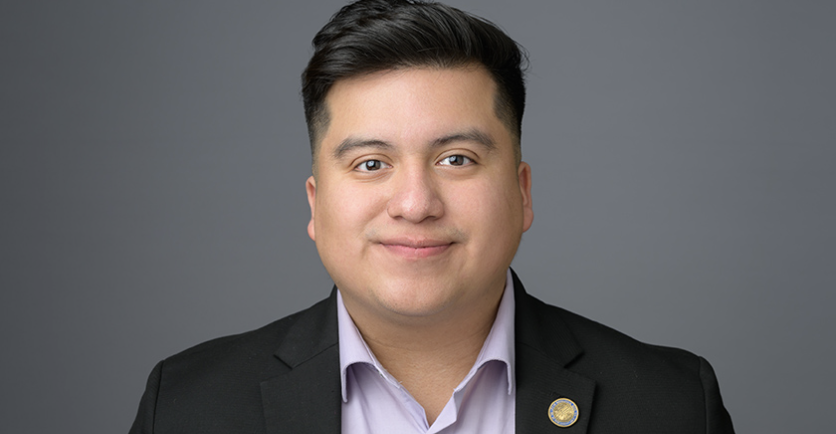Welcome back to The Flyover, your daily digest of important, overlooked, and/or interesting Minnesota news stories.
Free Vax Clinics Get the Ax
The Trump administration cut billions in Covid-related funding last month, using the justification (not that it seems particularly hung up over justifications) that the public health emergency is over. In Minneapolis, those sudden cuts will mean the cancelation of more than 80 free popup clinics that provided community members with COVID-19 vaccines, flu shots, and MPOX vaccines, all without the need for insurance or an appointment.
"It's devastating to see how quickly those resources were taken from our community," Sebastiana Cervantes, immunization coordinator for the city of Minneapolis, said during a Wednesday press conference. Cervantes added that these clinics were unique in their commitment to removing barriers; often they were held during weekend or evening hours, when those who work a 9-to-5 would be able to make it.
These funds would have gone away eventually—some in June of this year and some in 2026—but the department received an email in late March alerting them that the money was gone effective immediately, preventing them from making plans to sustain the program. Roughly $1.5 million remained in the clinic grant.
And as Luisa Brandao, director of public health initiatives for the Minneapolis Health Department, explained during the conference, childhood immunization rates declined during the pandemic and still aren't back to pre-pandemic levels. Last year, there was a measles outbreak in unvaccinated Minneapolis schoolchildren that hospitalized 11. "We are at risk of another outbreak if a case is introduced," Brandao said.
Uptown Death Watch: Here's the Latest
For Racket's first feature story, we spent 24 hours in Uptown, taking the pulse of Minneapolis's "most over-discussed neighborhood." Last summer, Mike Norton wrote in this feature about the temporary demise of Uptown: "The death of Uptown came slowly, then all at once. Its rebirth may be around the corner."
Without jinxing anything... are we... have we... turned that corner? This story from Melody Hoffmann at Southwest Voices makes it sound possible. There's certainly something in the air: the recent opening of the community space Queermunity, the upcoming openings of Moona Moono and Mosaic Coffee, the March purchase of the long-vacant Apple store. Hoffmann also touches on the Uptown Association’s two recent community meetings, which drew packed houses to the area to discuss the vacant businesses, public safety concerns, and the future of the neighborhood. It can be tough to quantify this stuff—that's why we wandered the streets for a day rather than trying to collect data—but if SWV's latest vibes assessment is right, things just might be looking up.
Who's Buying Blackout Plates?
Blackout license plates have been "a huge hit" since they were introduced last year, Tim Harlow reports for the Star Tribune. They're the most popular of the 123 specialty plates available in Minnesota and it ain't even close—a quarter-million sets of blackout plates are out there on the road today, crushing DVS sales projections by nearly 90,000.
But who is paying the extra $30 annual fee required to get the black-and-white plates? Well if you want that info by age group, they're most popular among residents between ages 45 and 54, according to DVS data obtained by the Strib, followed by those between 35 and 44. When it comes to vehicle types, BMW owners are the most likely to shell out, with with 1,441 blackout plates issued for every 10,000 registered vehicles. That's nearly double the next-closest car maker, Cadillac, which has 788 sets of plates out there for every 10,000. (Buick, Chrysler, and Ford drivers bring up the rear.) And if you want to know where they're most common, it's wealthy suburbs and "cities with wealthy enclaves": Dayton, Hanover, Rogers, Corcoran, Wayzata, Lake Elmo, etc.
Minneapolis Bikeways and 'Missed Connections'
Minneapolis is mighty proud of its bike lanes and trails, and that pride is well-earned. From the Midtown Greenway to the Grand Rounds Scenic Byway to the newer Bryant Avenue bikeway, the city boasts bikeability that's the subject of international renown.
But do you ever feel like something is... missing? Local cyclist Bennett Hartz does, and he outlines his thoughts on the so-called "missed connections" in Minneapolis's bike network in a very in-depth Medium piece. Take the aforementioned Greenway and Bryant Avenue bikeway, for example. The projects were completed nearly two decades apart, and today a single unprotected block separates these two protected bike routes. Now, sure—it's just a block. But as Hartz writes, "it’s a fatal flaw for most of the people these lanes are being built to serve: the Silent Majority of current-day rare- or non-riders who won’t even consider biking until they have a 100% safe and connected route to many places they regularly go."
The piece takes a look at how missed connections happen ("a problem of bureaucracy and competing political goals") and how they might get fixed (a designated city program, perhaps?) and includes a working list of missed connections that could use a first look. Well worth a read for any bike or infrastructure nerds (and we know there's a lot of overlap in that Venn diagram).







